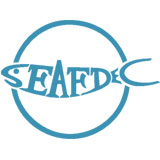A primer on putian.
Share
抄録
With the growing interest among fishfarmars in the culture of sugpo or Penaeus monodon, some attention is being focused on the lesser known prawns and shrimps such as putian, Hipong puti (Tagalog), putian (Cebuano, Ilongo), lunhan (Cebuano) and udang putih (Indonesia) are collective names given to two closely related species -- Penaeus indicus, so named bacause it is the Indian prawn and P. merguiensis or the banana prawn which gets its specific name from the Mergui Archipelago in Thailand, its type locality. Both are also called white prawn referring to their light color and almost transparent shell.
Aside from the Philippines and Indonesia, the distribution of these Indo-West Pacific species extends from Southest Africa for P. indicus and the Persian Gulf for P. merguiensis to India, South China, Southeast Asia, North Australia and New Guinea.
Very similar in apperance, the two species can be differentiated by means of a straight rostrum and high traingular rostral crest for P. merguiensis and curved rostrum amd low rostral crest for P. indicus. More convenient for a laymen is to associate yellowish to greenish antennae with P. indicus and a brown or raddish antennae with P. merguiensis. The maximum recorded body weight is 50 g and 35 g, respectively, for P. merguiensis and P. indicus.

